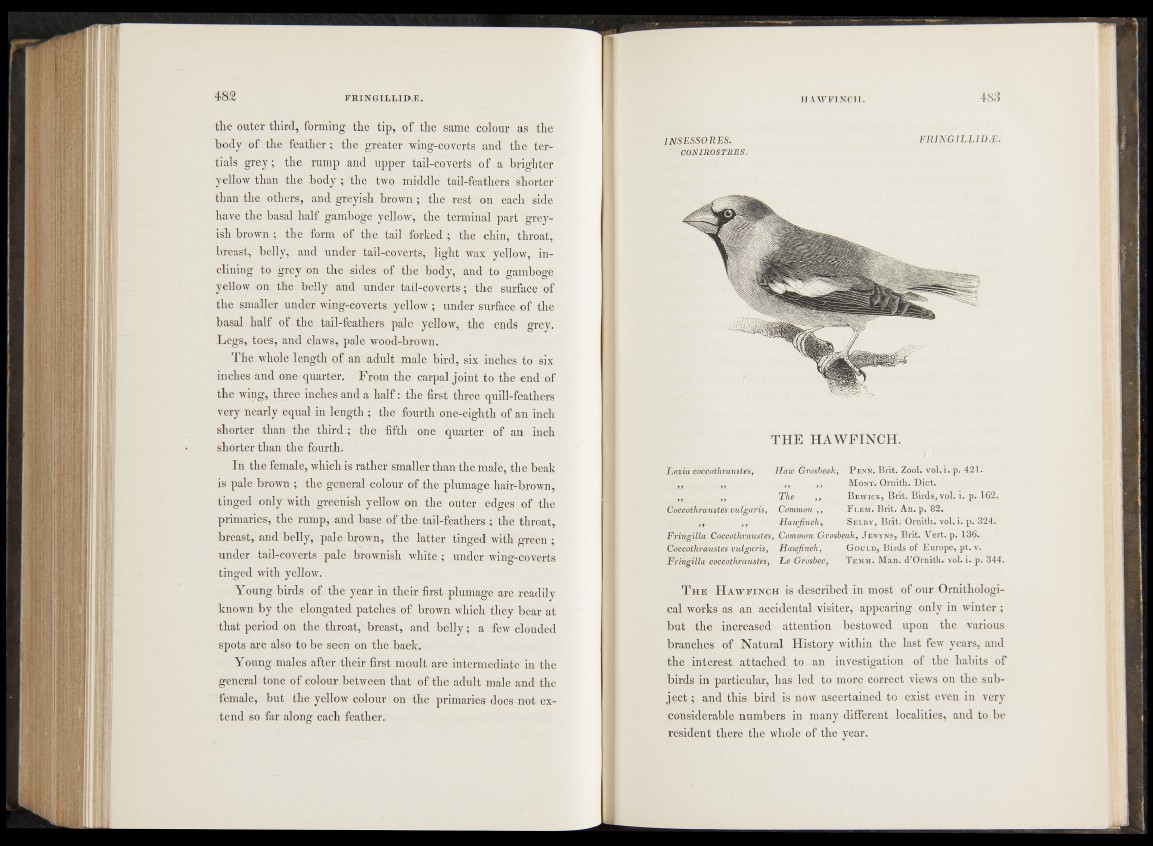
the outer third, forming the tip, of the same colour as the
body of the feather; the greater wing-coverts and the ter-
tials grey; the rump and upper tail-coverts of a brighter
yellow than the body; the two middle tail-feathers shorter
than the others, and greyish brown ; the rest on each side
have the basal half gamboge yellow, the terminal part greyish
brown ; the form of the tail forked; the chin, throat,
breast, belly, and under tail-coverts, light wax yellow, inclining
to grey on the sides of the body, and to gamboge
yellow on the belly and under tail-coverts; the surface of
the smaller under wing-coverts yellow ; under surface of the
basal half of the tail-feathers pale yellow, the ends grey.
Legs, toes, and claws, pale wood-brown.
The whole length of an adult male bird, six inches to six
inches and one quarter. From the carpal joint to the end of
the wing, three inches and a half: the first three quill-feathers
very nearly equal in length ; the fourth one-eighth of an inch
shorter than the third ; the fifth one quarter of an inch
shorter than the fourth.
In the female, which is rather smaller than the male, the beak
is pale brown ; the general colour of the plumage hair-brown,
tinged only with greenish yellow on the outer edges of the
primaries, the rump, and base of the tail-feathers ; the throat,
breast, and belly, pale brown, the latter tinged with green ;
under tail-coverts pale brownish white ; under wing-coverts
tinged with yellow.
Young birds of the year in their first plumage are readily
known by the elongated patches of brown which they bear at
that period on the throat, breast, and belly; a few clouded
spots are also to be seen on the back.
Young males after their first moult are intermediate in the
general tone of colour between that of the adult male and the
female, but the yellow colour on the primaries does not extend
so far along each feather.
1NSESSORES. FRINGILL1DJE.
c o n i r o s t h e s .
TH E H AW F IN CH .
Lo,x,i a coccoth,,r austes, H,a,w Grosbeak, P enn. Brit. Zool. vol. i. p. 421. ,, Mont. Ornith. Diet.
„ „ The ,, Bewick, Brit. Birds, vol. i. p. 162.
Coccothraustes vulgaris, Common ,, F lem. Brit. An. p. 82.
,, ,, Hawfinch, S elby, Brit. Ornith. vol. i. p. 324.
Fringilla Coccothraustes, Common Grosbeak, J enyns, Brit. Vert. p. 136.
Coccothraustes vulgaris, Hawfinch, Gould, Birds of Europe, pt. v.
Fringilla coccothraustes, Le Grosbec, Temm. Man. d’Ornith. vol. i. p. 344.
T he H awfinch is described in most of our Ornithological
works as an accidental visiter, appearing only in winter ;
but the increased attention bestowed upon the various
branches of Natural History within the last few years, and
the interest attached to an investigation of the habits of
birds in particular, has led to more correct views on the subject
; and this bird is now ascertained to exist even in very
considerable numbers in many different localities, and to be
resident there the whole of the year.